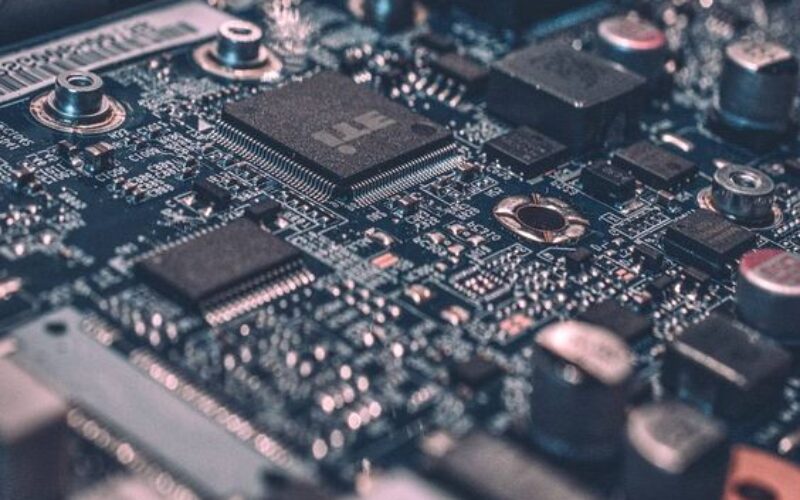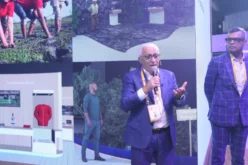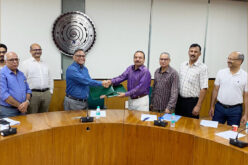Two full-blown multi-billion dollar semiconductor plants going to come up in India: MoS IT

About:
The announcement by India’s Minister of Electronics and IT, Rajeev Chandrasekhar, of the impending construction of two cutting-edge semiconductor fabrication plants in the nation is a momentous step that could revolutionize the semiconductor industry in that nation. These upcoming facilities, which are expected to require multibillion-dollar investments, in addition to multiple chip assembly and packaging units, represent a significant step in strengthening India’s semiconductor industry.
Semiconductor Fabrication Plants:
The two semiconductor fabs, or fabrication plants, are expected to be built soon using state-of-the-art technologies with a nanometer range of 65 to 28. These factories, whose estimated investment value is in the billions, are a crucial step in strengthening India’s capacity to produce semiconductors and establishing the nation as a major player in the global semiconductor market.
Investment Proposals:
The announcement follows the submission of sizeable investment proposals by well-known industry participants. Notably, Tower Semiconductors, based in Israel, has offered USD 8 billion, and the prestigious Tata Group has also made a sizeable investment proposal. These proposals demonstrate the confidence that international investors have in India’s technological capabilities and underline the growing recognition of the country’s potential as a profitable location for semiconductor manufacturing.
Government Support and Strategic Vision:
Minister Chandrasekhar emphasized the unwavering support of the government in fostering the semiconductor ecosystem in India. He underscored the importance of swift and strategic action to capitalize on the opportunities in semiconductor manufacturing, rectifying decades of missed opportunities. Through concerted efforts and strategic initiatives, the government aims to propel India to the forefront of semiconductor innovation and manufacturing on the global stage.
Semiconductor Roadmap
The impending approval of these projects, anticipated during the third term of Prime Minister Narendra Modi, signifies a monumental leap forward in India’s semiconductor roadmap. The government has received a total of four proposals for semiconductor manufacturing plants and thirteen proposals for chip assembly, testing, monitoring, and packaging (ATMP) units. These initiatives are poised to revolutionize the semiconductor landscape in India and catalyze the nation’s technological advancement.
Strengthening the Semiconductor Ecosystem
Recent years have seen impressive advancements in India’s semiconductor industry thanks to targeted interventions and supportive legislation. Minister Chandrasekhar emphasized the government’s dedication to fostering the semiconductor industry, pointing to a notable ten-year increase in domestic electronics manufacturing. The government has demonstrated its commitment to creating an environment that is favourable for semiconductor innovation and manufacturing through its proactive measures, such as lowering import duties on electronic components.
Vision for the Future
Minister Chandrasekhar reaffirmed India’s aspirational goal of leading the world in electronics manufacturing as it looks to the future. India is positioned to become a major force in the global semiconductor market, with a clear goal of reaching USD 300 billion in electronics manufacturing by 2026–2027. The government’s unwavering dedication to supporting innovation, building an ecosystem that supports it, and utilizing international alliances portends well for India’s rise to prominence in the semiconductor manufacturing sector.
India’s semiconductor industry is poised for a revolutionary change, driven by large-scale investments, calculated initiatives, and government backing. India is positioned to become a powerful force in the semiconductor manufacturing industry, meeting both domestic and international demand, with the establishment of multi-billion dollar semiconductor fabs and chip assembly units. The government’s proactive measures and Minister Chandrasekhar’s vision demonstrate a resolute commitment to leveraging India’s potential as a global leader in electronics manufacturing. The ongoing evolution of the semiconductor ecosystem is expected to catalyze innovation, economic growth, and sustainable development as India moves closer to becoming a technologically self-sufficient and globally competitive nation.














